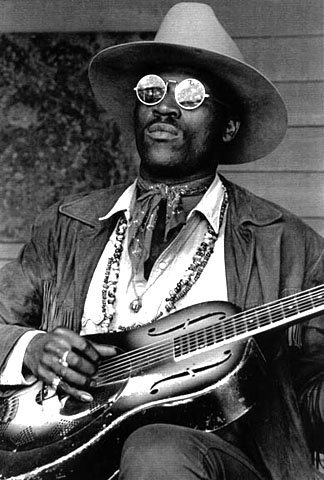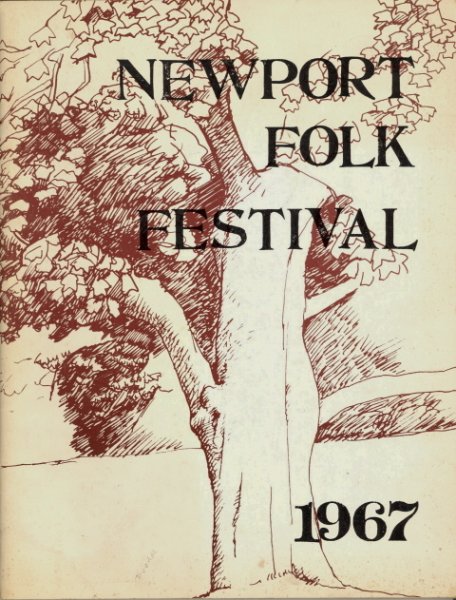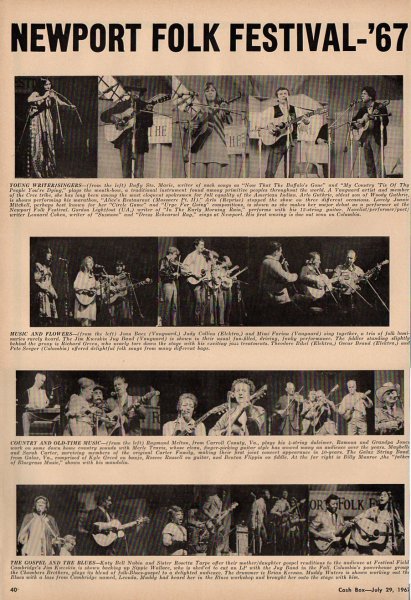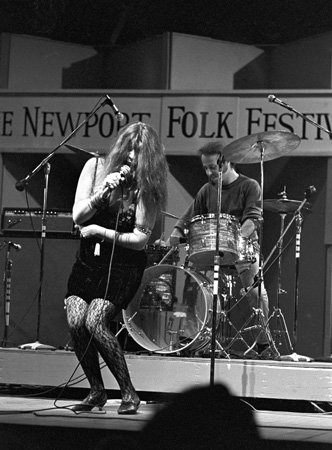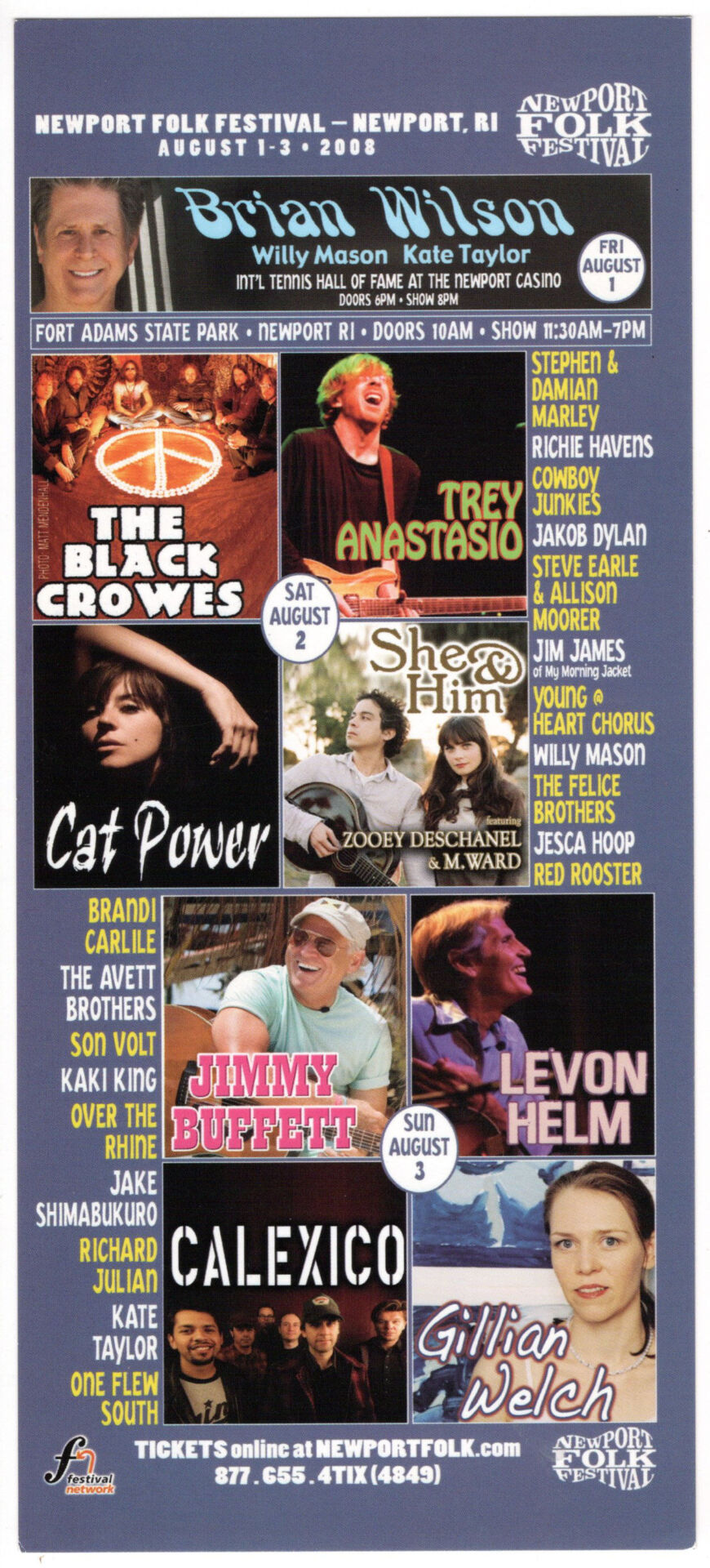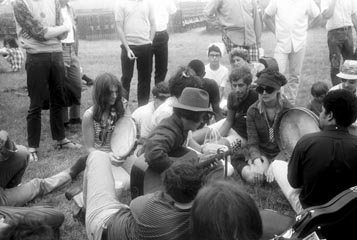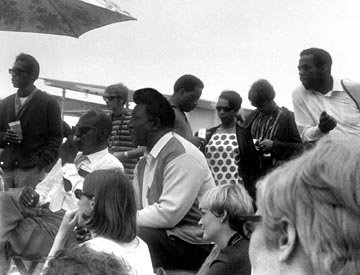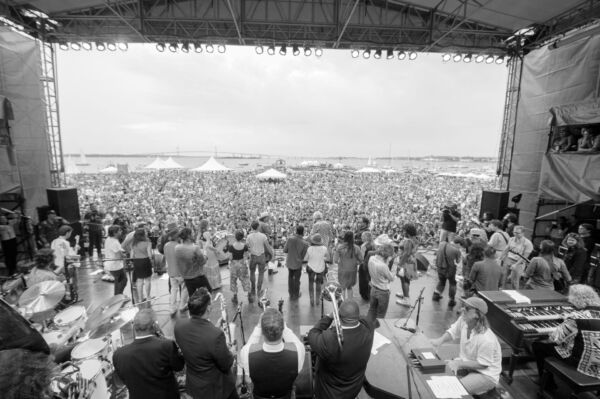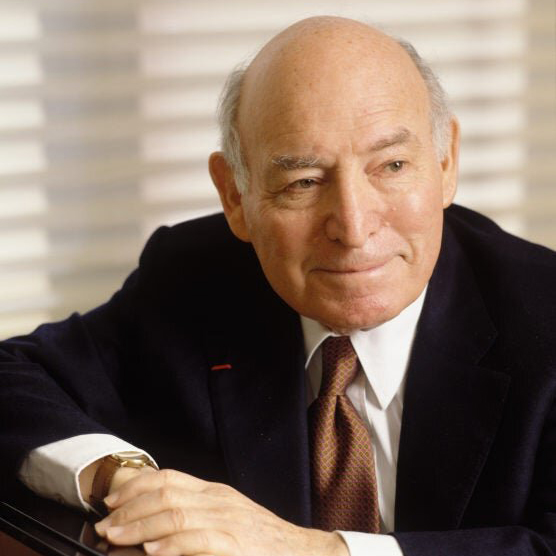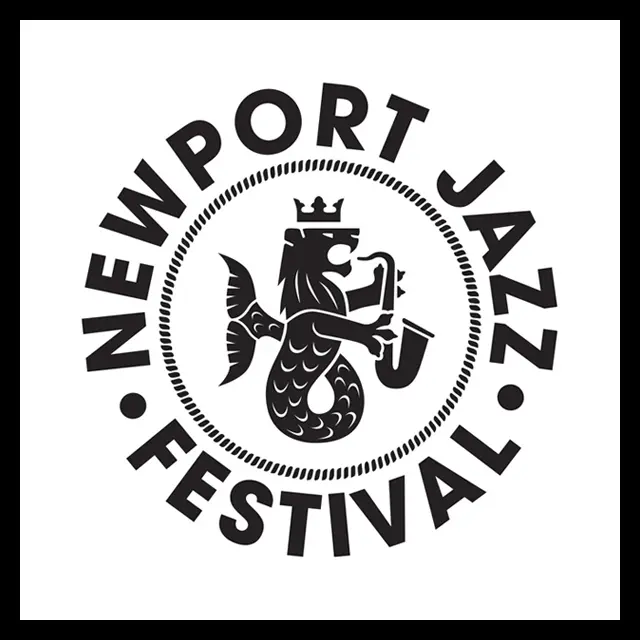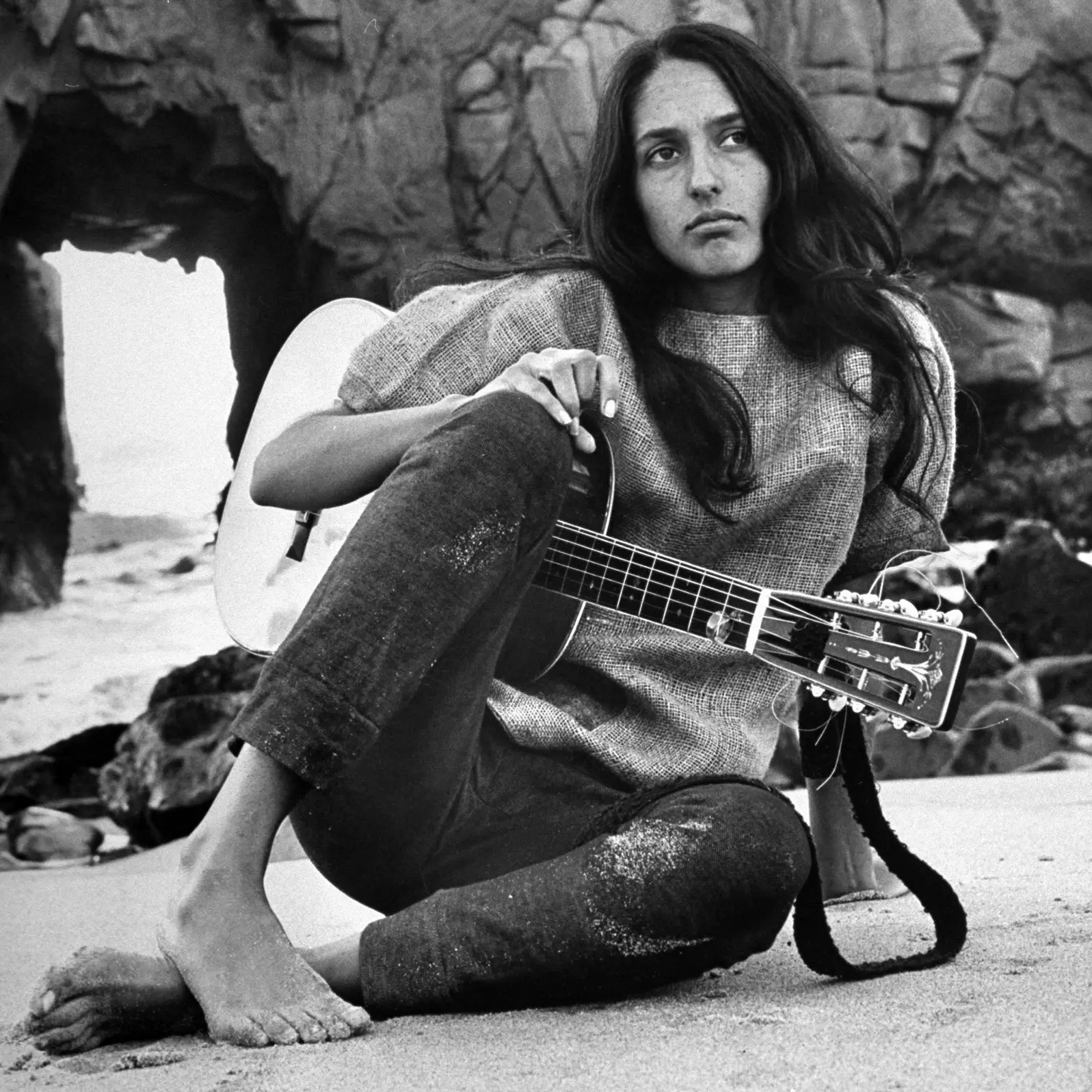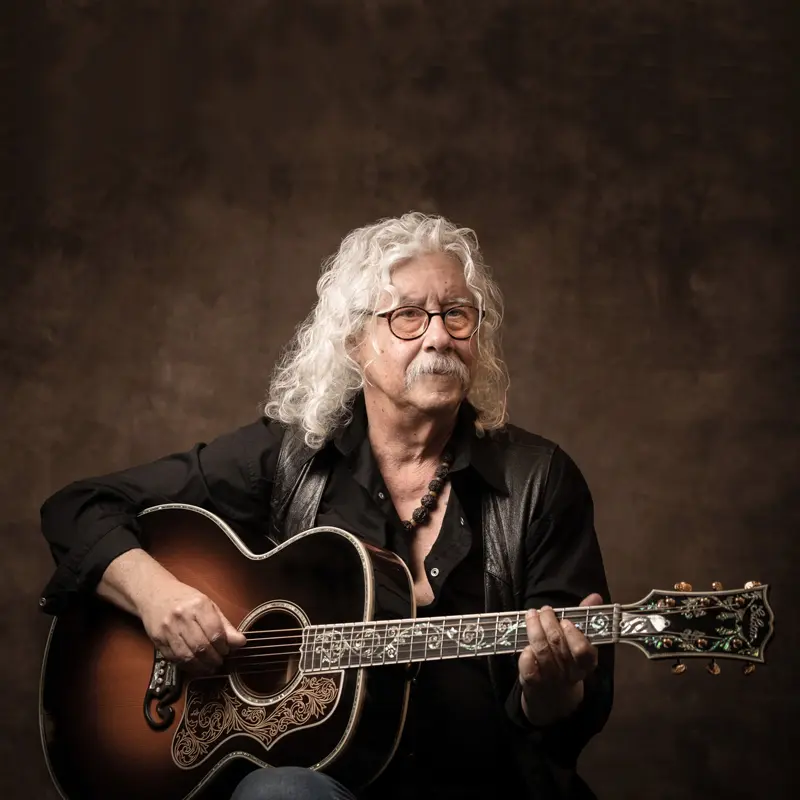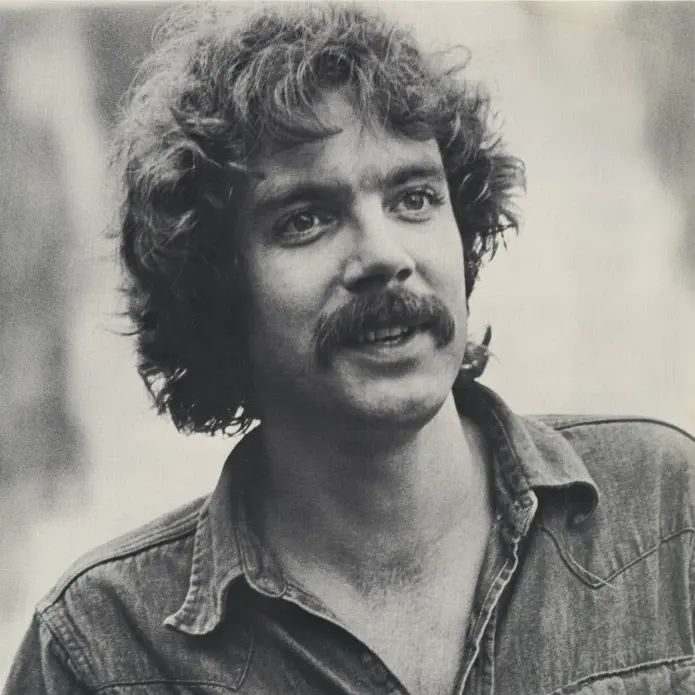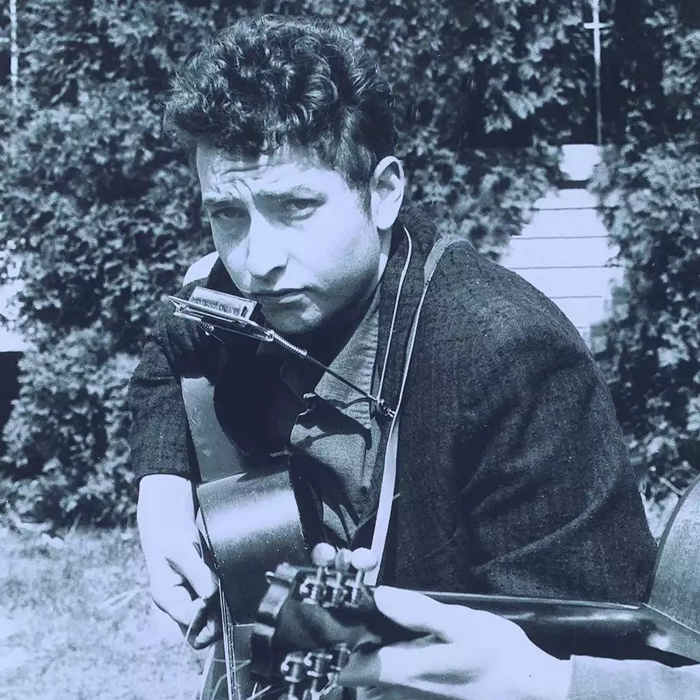Newport Folk Festival: A Triptych
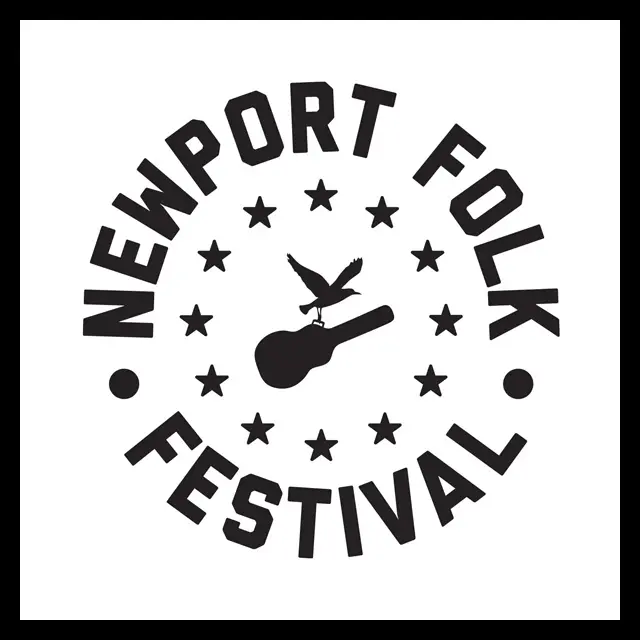
The mid-1960s were a time of tremendous transition in popular music. We’d been through the roots of rock with Chuck Berry, Buddy Holly, Elvis and multitudes of other talented artists, and in the early part of the decade we became enamored with folk. The easy sounds of Tom Rush, The Kingston Trio and Peter, Paul and Mary gave our parents a little break, although Bob Dylan and Joan Baez were always there to drive them over the edge to insanity. According to them, Dylan couldn’t sing and Baez was just wailing; they had no taste in music. By 1965, folk was out of favor and the British Invasion was winning the war of the airwaves.
More importantly for me, I had my driver’s license and was planning to attend the Newport Folk Festival. Established in 1959, years before Monterey Pop in 1967 and Woodstock in 1969, the Newport event was the high point of July in New England. George Wein, the driving force behind the Newport Jazz Festival (established in 1954), knew that the time was right for a festival that featured folk music with a dash of similar styles, such as bluegrass and country. Obviously, the Newport Folk Festival built its iconic status on folk music, but it was forced to make adjustments to meet the needs of an audience that grew up on The Beatles. Rock was rapidly replacing folk with the younger crowd.
I went to the ’65 Saturday evening show expecting great folk music with maybe a little rock flavor, but what happened shook the musical world. Even though all the equipment loaded onto the stage should have prepared the audience for what was about to happen, we were shocked when Dylan “went electric” since until that night he’d been the epitome of folk music. There was some booing (but not as much as reported) and most of the negative response was from promoters and traditional-folk devotees who’d secured seating close to the stage. With The Paul Butterfield Blues Band backing him up, Dylan began his set with a formerly classic folk song, “Maggie’s Farm,” and the booing began. Dylan may have faltered a little, but I think he was sending a message by choosing that song. His new sound a surprised most of us, but it also seemed a natural progression for one of the most talented singer-songwriters of the century. Unlike trad-folk icon Pete Seeger, the younger crowd embraced anything Dylan did and many of us couldn’t imagine him being booed. Like we’d heard so many times before from the “original” Bob, “Your old road is rapidly agin’, so get out of the new one if you can’t lend a hand, for the times, they are a changin.'” The new Dylan was here to stay, and the music gods had created a new genre called “folk rock.” Most of the crowd was grateful to have seen a legend perform and excited to have witnessed his transformation. Incredible!
My next festival was in 1967. After the first time, my expectations were high, but no one expected anything like the ’65 Dylan controversy. This festival was a little more infused with rock music and the music was great, with the old social commentary of folk music being not as prevalent. Then Arlo Guthrie took the stage and the fun began. He was fairly new to the scene at the time, but we were all familiar with his father, the legendary Woody Guthrie. For the first time ever, he performed “Alice’s Restaurant,” starting with the refrain and setting up the crowd to expect a cute little song about a restaurant (since folk songs were often about everyday things). By the second refrain, hundreds of people were singing along and laughing about what Arlo called the “massacree.” It was like a 20-minute sing-along party and Arlo had hooked us all. To make things even better, he recorded it live, right there, with the audience singing along. In addition to making music history, he inspired hundreds of people to become recording artists. Incredible again!
My final year was 1968, when the music was more current and included a lot more rock ‘n’ roll. Cheering and applause erupted from the crowd when Big Brother & The Holding Company walked onto the stage followed by a strutting Janis Joplin singing “Piece of My Heart.” You could feel and hear the excitement in the air since she had a way of making you feel every single word she sang. From the emotional turmoil of her opening to the soulful sound of “Summertime,” Janis mesmerized the entire audience. Who would ever believe that she’d performed at something known as a “folk festival”? She was so flamboyant, so entertaining, so special. Her voice and style were unforgettable and she seemed truly excited to be there. When the set closed with another bit of “Piece of My Heart,” the crowd was so frenzied that the emcee advised us all to drive safely on the way home. Janis was the star that burned into our memories of that amazing night, but she was gone just two years later. Once again, music history was made in a small town in Rhode Island. At the time, Janis’s appearance with Big Brother & The Holding Company was the largest draw the festival had ever seen, which was probably the reason that it kept going for the next three years.
The ’68 event was my last one, though. I guess the Newport Folk Festival couldn’t keep up with the times, since it suspended operation in 1971. However, the love of the music and Newport lived on and the it was resurrected in 1985. It’s not quite the same, and includes more rock and contemporary music now than it ever has, but lives on to this day. Maybe I’ll go back this summer. Maybe I’ll witness music history being made one more time.
(by Carol Murphy Starkey)

